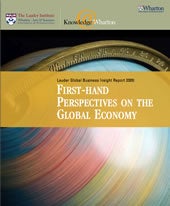Looking for more insights?
Sign up to stay informed about our latest article releases.
Listing in Toronto has become a major trend among Chinese enterprises. According to the Toronto Stock Exchange (TSX), the reasons for this are numerous, including access to capital, a strong equity culture, lower costs for professional services and less stringent demands for listing compared to the U.S. and the U.K. In November 2008, Polo Biology Technology Co., Ltd., a subsidiary of the Polo Group, successfully listed on the TSX, becoming the 66th Chinese company to do so. In an interview with China Knowledge at Wharton, Miranda Liu, vice president of Polo Group, spoke about the advantages of the TSX, the challenges that come with international branding, and what’s on the horizon for the company.

Sign up to stay informed about our latest article releases.